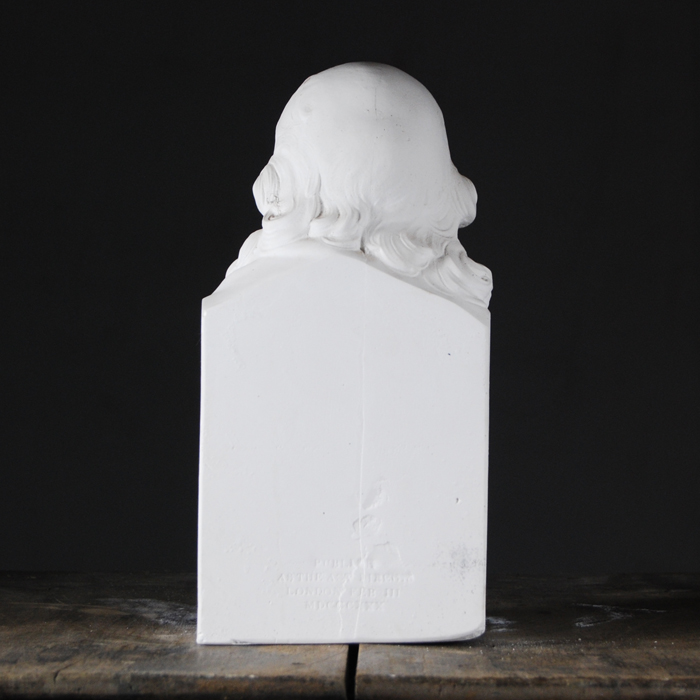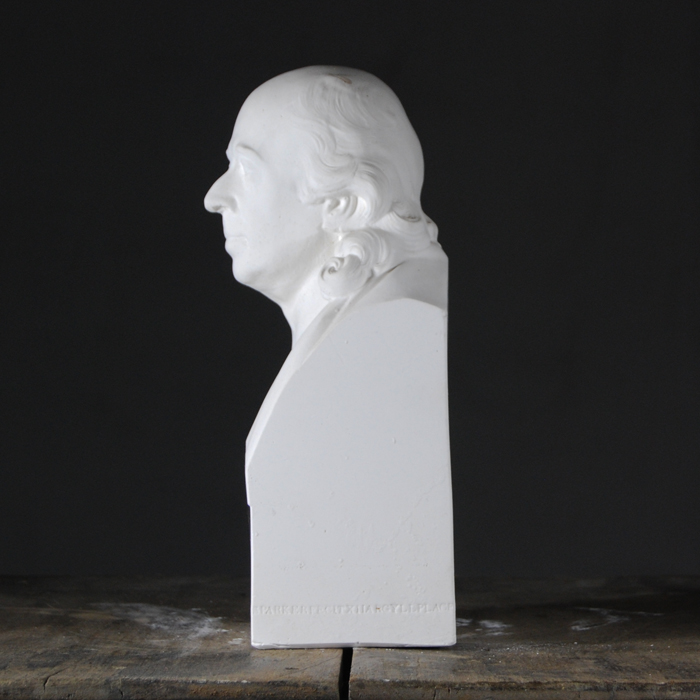A small English library plaster bust of John Flaxman,
modelled with flowing locks, his head turned slightly a sinestra,
the plinth bearing "IOHN FLAXMAN" to the obverse, "SPARKERFECITXIIARGYLLPLACE" to one side, and "SAM JOSEPH SCULPSIT" to the other, and "PUBLISH AS THE ART DIRECT(?), LONDON, FEB III MDCCCXXX"
£135
In stock (can be backordered)
this bust pairs well with another by the same hand – “Walter Scott” see 44223.
John Flaxman R.A. (6 July 1755 – 7 December 1826) was a British sculptor and draughtsman, and a leading figure in British and European Neoclassicism. Early in his career he worked as a modeller for Josiah Wedgwood’s pottery. He spent several years in Rome, where he produced his first book illustrations. He was a prolific maker of funerary monuments.
Samuel Joseph RSA (1791–1 July 1850) was a pupil of Peter Rouw, and attended the Royal Academy Schools in 1811, gaining the silver medal there in both 1811 and 1812. In 1815 he won the gold medal for “Eve Supplicating Forgiveness”. In 1823 he went to Edinburgh, becoming a founding member of the Royal Scottish Academy in 1826. During this time he taught Alexander Handyside Ritchie.
He left Edinburgh in 1829 to set up a bigger and more prestiguous studio in London.
His most famous and noted work is the statue of William Wilberforce in Westminster Abbey, created in 1838. A plaster copy of it also exists in St John’s College, Cambridge. He exhibited in the Royal Academy from 1811 to 1846, and the Royal Scottish Academy from 1827 to 1835. He was declared bankrupt in 1848 and forced to sell most of his belongings.
He died in London on 1 July 1850, leaving seven children. The Royal Academy granted a pension to his widow, which continued until her death, 13 years later. A wax portrait of Samuel Joseph by T. Smith was exhibited in 1828 at the Royal Academy.
He is known to have trained the Edinburgh sculptor Peter Slater.







